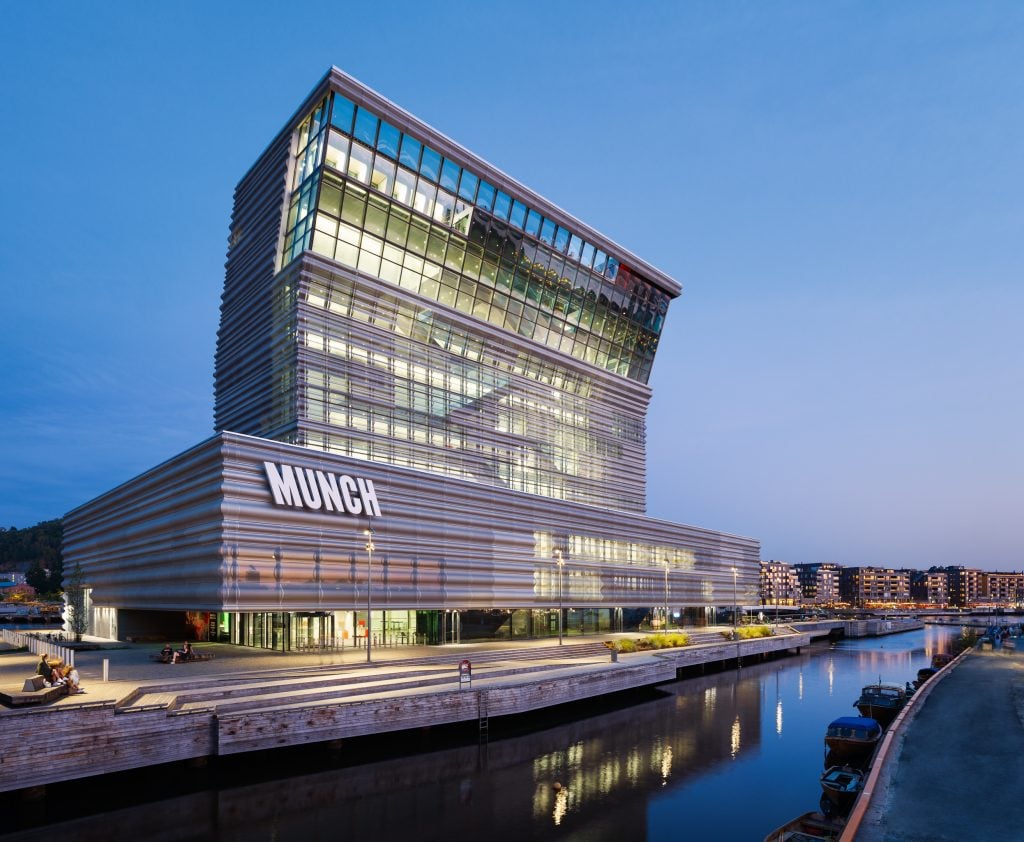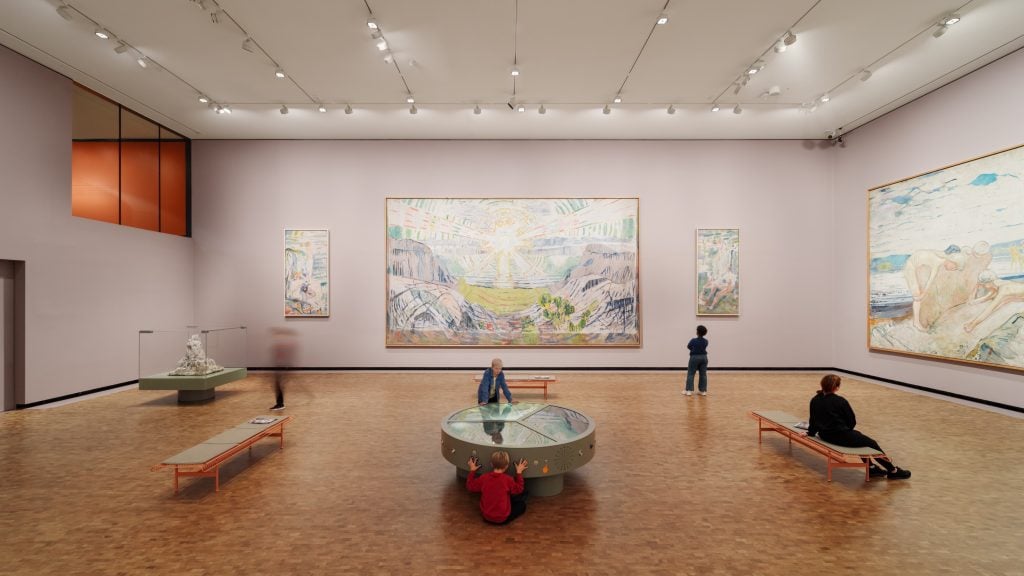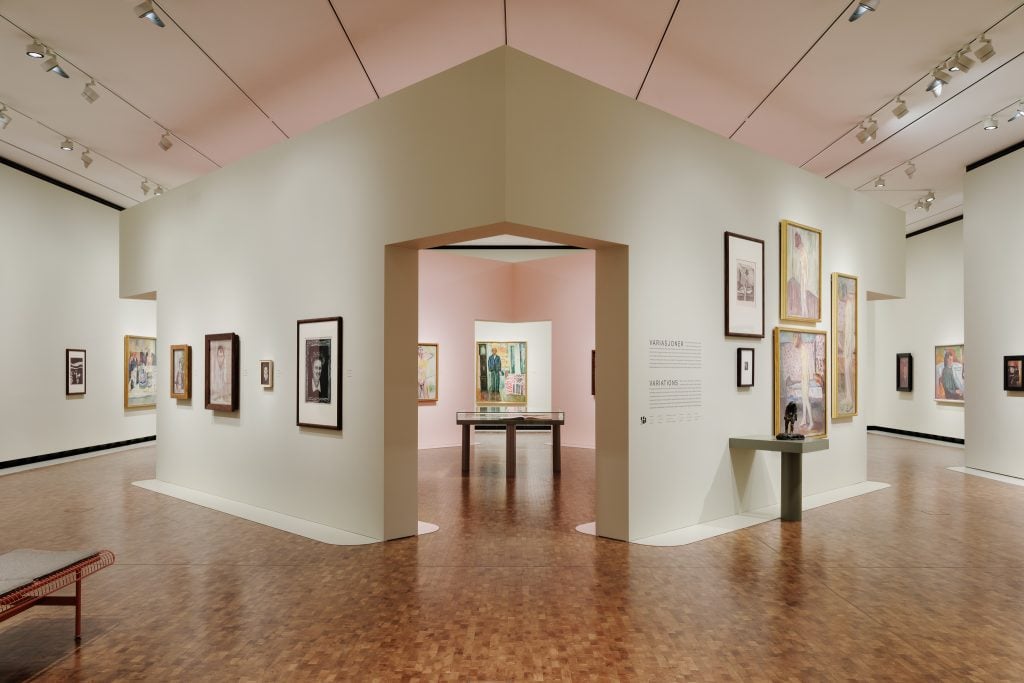Museums & Institutions
After More Than a Decade of Controversy and Delays, a Massive New Museum for Edvard Munch Has Opened at Last in Norway
At 13 stories and 283,000 square feet, it's one of the largest single-artist museums in the world.

At 13 stories and 283,000 square feet, it's one of the largest single-artist museums in the world.

Taylor Dafoe

In Norway, Edvard Munch looms large. Now, a museum erected in his name at the center of the country’s capital does too.
After years of setbacks and delays, the much-anticipated new institution dedicated to the artist, rebranded “MUNCH,” opened alongside the Oslo fjord today. Its lengthy timeline is outdone only by its size: the building’s 13 stories and 283,000 square feet put it among the largest single-artist museums in the world.
The museum won’t have any trouble filling the space. The institution, an updated version of the one first built for the late Norwegian artist in 1963, owns some 26,700 paintings, prints, photographs, and drawings he created between 1873 and 1944, many of his greatest hits among them—including his Madonna and various versions of The Scream—which the artist bequeathed to the city of Oslo.

A gallery inside the Munch museum. Photo: Einar Aslaksen. Courtesy of Munch.
But the public museum purports to be a destination for more than just art. In addition to its 11 exhibition halls, the site, designed by the Spanish architectural group Estudio Herreros, also boasts a panoramic top-floor restaurant, research and conservation facilities, and numerous spaces for shopping, gathering, and programming. “Forget everything you know about museums—this is something different,” the director, Stein Olav Henrichsen, told the Art Newspaper.
The project “opened up a conversation about what a museum is,” added Juan Herreros, the founder of the firm behind the design, to Wallpaper. “They used to be fundamentally places for exhibitions. There was some talk about them being social hubs, places of encounter, but it didn’t always translate into the architecture. Now, it is about how to bring all those different conversations and functions together in one building.”

Photo: Einar Aslaksen. Courtesy of Munch.
The permanent presentations of the inventive Expressionist’s work include “Infinite,” a survey of his major motifs; “Monumental,” a spacious display of his largest canvases; and “Shadows,” an interactive experience centering on the artist’s life that integrates his personal effects. They’ll be accompanied by rotating temporary exhibitions, such as “The Loneliness of the Soul,” a show that puts Munch in conversation with Tracey Emin, on view now through January 2022.
The City of Oslo approved the construction of an updated Munch museum as far back as 2008, and even launched a design competition to select an architect, but numerous snags stalled construction efforts in the following years. In 2011, for instance, the city council voted to cancel the project for financial reasons. The museum came to a council vote again in 2013, and was re-approved. Construction started in late 2015.

A gallery inside the Munch museum. Photo: Einar Aslaksen. Courtesy of Munch.
In total, the museum cost a reported 2.25 billion Norwegian kroner, or $260 million, to build. But not everyone thinks it was money well spent. Herreros’s design, in particular, has been the subject of debate in Oslo, with various critics calling it a “threatening black shadow” and the “world’s largest collection of guard rails,” according to local news reports.